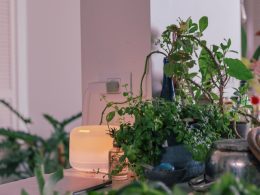Maintaining a healthy garden can be a rewarding experience, but it can also be frustrating when plants start to show signs of distress. Fortunately, many common plant problems can be easily identified and treated with a little bit of knowledge and effort. In this article, we’ll explore some of the most common plant problems and how to troubleshoot them.
Yellowing Leaves
One of the most common plant problems is yellowing leaves. This can be caused by a variety of factors, including nutrient deficiencies, overwatering, and pests. To troubleshoot yellowing leaves, start by examining the plant’s soil. If the soil is too wet, allow it to dry out before watering again. If the soil is dry, water the plant thoroughly and consider adding a layer of mulch to help retain moisture. If the plant is lacking nutrients, consider adding a fertilizer that is appropriate for the plant’s needs. If pests are the problem, identify the pest and treat accordingly.
Wilting Plants
Wilting plants can be caused by a lack of water, overwatering, or pests. To troubleshoot wilting plants, start by examining the soil. If the soil is dry, water the plant thoroughly. If the soil is wet, allow it to dry out before watering again. If pests are the problem, identify the pest and treat accordingly.
Brown Spots on Leaves
Brown spots on leaves can be caused by a variety of factors, including fungal infections, pests, and nutrient deficiencies. To troubleshoot brown spots on leaves, start by examining the plant’s leaves. If the spots are caused by a fungal infection, remove the affected leaves and treat the plant with a fungicide. If pests are the problem, identify the pest and treat accordingly. If the plant is lacking nutrients, consider adding a fertilizer that is appropriate for the plant’s needs.
Stunted Growth
Stunted growth can be caused by a lack of nutrients, overwatering, or pests. To troubleshoot stunted growth, start by examining the plant’s soil. If the soil is lacking nutrients, consider adding a fertilizer that is appropriate for the plant’s needs. If the soil is too wet, allow it to dry out before watering again. If pests are the problem, identify the pest and treat accordingly.
Conclusion
Maintaining a healthy garden requires a little bit of knowledge and effort, but it can be a rewarding experience. By troubleshooting common plant problems, you can keep your garden looking beautiful and thriving. Remember to examine the soil, identify pests, and provide appropriate nutrients to keep your plants healthy and happy.











